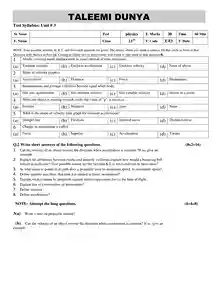phy-11-unit-3
phy-11-unit-3
“Motion and Force” in 1st-year physics covers essential concepts related to motion, forces, and momentum.
Displacement: It represents the change in position of a body from its initial to final position.
Velocity:
Average Velocity: The average rate at which the displacement vector changes with time.
Instantaneous Velocity: Velocity at a specific instant.
Acceleration:
Average Acceleration: The ratio of change in velocity (Δv) to the time interval (Δt).
Instantaneous Acceleration: Acceleration at a particular instant.
The slope of a velocity-time graph represents instantaneous acceleration.
Newton’s Laws of Motion:
First Law: An object remains at rest or in uniform motion unless acted upon by an external force.
Second Law: The rate of change of momentum is proportional to the applied force.
Third Law: When two objects interact, they exert equal and opposite forces on each other.
Momentum and Impulse:
Momentum = mass × velocity
Impulse = force × time (change in momentum)
Total momentum remains constant in an isolated system.
Elastic Collisions:
Conserve both momentum and kinetic energy.
Some energy may transfer as heat due to friction, air resistance, etc.
Circular Motion:
Understand the concepts of centripetal force and centripetal acceleration.
Explore examples like a car turning around a curve or a satellite orbiting Earth.
Tension and Pulleys:
Study tension forces in ropes or cables.
Investigate how pulley systems affect force distribution.
Gravitational Force:
Learn about Newton’s law of universal gravitation.
Calculate gravitational force between two masses.
Explore how weight varies with altitude.
